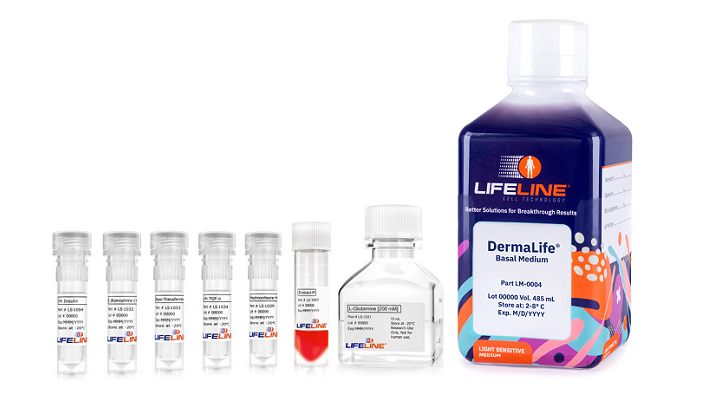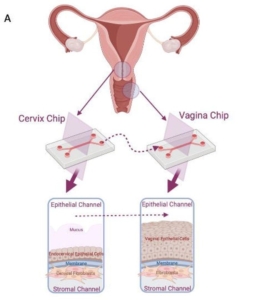3D cell cultures are evolving rapidly, offering increasingly complex systems that closely mimic the structure, microenvironment, and physiological functions of human organs and tissues. These models enable the study of spatial cell organization, organ and disease development, and provide powerful tools for drug screening, toxicity assessment, and transplantation research.
By combining relevant cell types, media, extracellular matrices or bioprinted structures, researchers can simulate natural environments with high accuracy. To date, numerous models of human tissues and organs, both in healthy and diseased states, have been successfully developed.
These include:
| · Bone marrow organoids [1] |
· Prostate organoids [7] |
| · Breast cancer-on-chip [2] |
· Renal proximal Tubule-on-a-Chip [8] |
| · Cerebral organoid cultures [3] |
· Skin: 3D Models [9], Chips [10] & Open-Top Chip [11] |
| · Colon organoids [4] |
· Tumoroid-on-a-Plate [12] |
| · Fibrosis model [5] |
· Vagina [13, 14] and Cervix Chips [14] |
| · Kidney Chip [6] |
|
Solutions from CellSystems®
CellSystems offers high-quality products suited for 3D cell culture applications:
| Product Category |
Examples |
| Human Primary Cells, iPSCs, Culture Media & Subculture Reagents |
Human Skin Cells and Media:
o Epidermal Keratinocytes & DermaLife K Media
o Melanocytes & DermaLife M Media
o Microvascular Endothelial Cells (mvECs) & VascuLife Media
o Fibroblasts & FibroLife Media
Reproductive Cells and Media for male & female:
o Female Reproductive Cells & Media
o Male Reproductive Cells & Media
Human Umbilical Vascular Endothelial Cells (HUVEC)
Peripheral Blood Mononuclear Cells (PBMCs)
iPSC Lines, Ready-to-use iPSC-differentiated Cells & Media
Subculture Reagents for gentle cell dissociation |
| Extracellular Matrices (ECM), 3D Hydrogels & Adhesion Peptides
|
Collagen (Atelocollagen, Telocollagen) from bovine, human or rat
Tunable Stiffness Hydrogels such as Hystem HA, PhotoGel – Methacrylated Gelatin or PEGDA
Silk Fibroin (lyophilized powder / solution)l
Adhesion Peptides, such as Poly-L/ or D-Lysine, Poly-L-Ornithin, PEPTITE-2000 |
| Enzymes and Inhibitors for Tissue Dissociation, Cell Isolation & Decellularization of ECM |
Collagenase Preparations Type 1 – 7 and animal-free A – D & Dispase®
Papain & Trypsin
Hyaluronidase
DNase I
Trypsin Inhibitors, e.g. Soybean |
| iPSC Services |
iPSC generation & Gene Editing |
References:
[1] Olijnik, A., et al. Nature Protocols, 19(7), 2024, 2117–46.
[2] Maulana, T., et al. Cell Stem Cell, 31(7) 2024, 989-1002.e9.
[3] Donadoni, M., et al. Journal of NeuroVirology, 2024.
[4] Mitrofanova, O., et al. Cell Stem Cell, 31(8), 2024, 1175-1186.e7.
[5] Petrachi, T., et al. Biomedicine & Pharmacotherapy, 165, 2023, 115146.
[6] Mou, X., et al. Science Advances, 10(23), 2024, eadn2689
[7] Xie, L., et al. Environmental Health Perspectives, 128(6), 2020, 067008.
[8] Nie, J., et al. Advanced Science, 11(30), 2024, 2400970.
[9] Chettouh-Hammas, N., et al. Ed N. Ismail. Oxidative Medicine and Cellular Longevity. 2023, 1–15.
[10] Sun, S., et al. Nature Communications, 13(1), 2022, 5481.
[11] Varone, A., et al. Biomaterials, 275, 2021, 120957.
[12] Seyfoori, A. et al. bioRxiv preprint, 2024
[13] Mahajan G, et al. Microbiome. 2022, 26;10(1):201.
[14] Gutzeit, O. et al. Systems Biology, 23, 2023.









